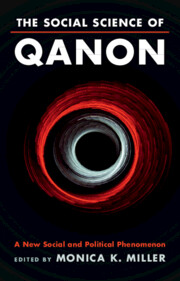Book contents
- The Social Science of QAnon
- The Social Science of QAnon
- Copyright page
- Dedication
- Contents
- Contributors
- Preface
- Part I Introduction to QAnon
- Part II Recruiting and Maintaining Followers
- Part III QAnon and Society
- Chapter 8 QAnon in the Year 2020
- Chapter 9 QAnon and the Politics of 2020
- Chapter 10 The QAnon Conspiracy Narrative
- Chapter 11 The Need to Belong
- Part IV The Role of Communication in Promoting and Limiting QAnon Support
- Part V The Future of QAnon
- Index
- References
Chapter 11 - The Need to Belong
The Appeal, Benefits, and Dangers of QAnon and Similar Groups
from Part III - QAnon and Society
Published online by Cambridge University Press: 14 September 2023
- The Social Science of QAnon
- The Social Science of QAnon
- Copyright page
- Dedication
- Contents
- Contributors
- Preface
- Part I Introduction to QAnon
- Part II Recruiting and Maintaining Followers
- Part III QAnon and Society
- Chapter 8 QAnon in the Year 2020
- Chapter 9 QAnon and the Politics of 2020
- Chapter 10 The QAnon Conspiracy Narrative
- Chapter 11 The Need to Belong
- Part IV The Role of Communication in Promoting and Limiting QAnon Support
- Part V The Future of QAnon
- Index
- References
Summary
Humans have a deep longing and need for connection and a sense of belonging. Social groups provide safety, a sense of purpose, and identity, and fulfil the psychological need to belong. For many, that need is fulfilled through family, peers, co-workers and other pro-social institutions. But others struggle to find their place. The online space provides opportunities for people to connect with others, especially during times of physical disconnection yet it is vulnerable to misuse and manipulation. This chapter discusses the need for belonging, and how struggles to belong contribute to participation in anti-social groups such as gangs, cults, and conspiracy groups. Using QAnon as an example, this chapter illustrates how conspiracy groups provide a sense of community, as people find and create meaning around shared and constructed identities which can lead to personal and societal risks. The chapter demonstrates how the need for belonging intersects with various other factors, in potentially beneficial or detrimental ways.
- Type
- Chapter
- Information
- The Social Science of QAnonA New Social and Political Phenomenon, pp. 176 - 192Publisher: Cambridge University PressPrint publication year: 2023



